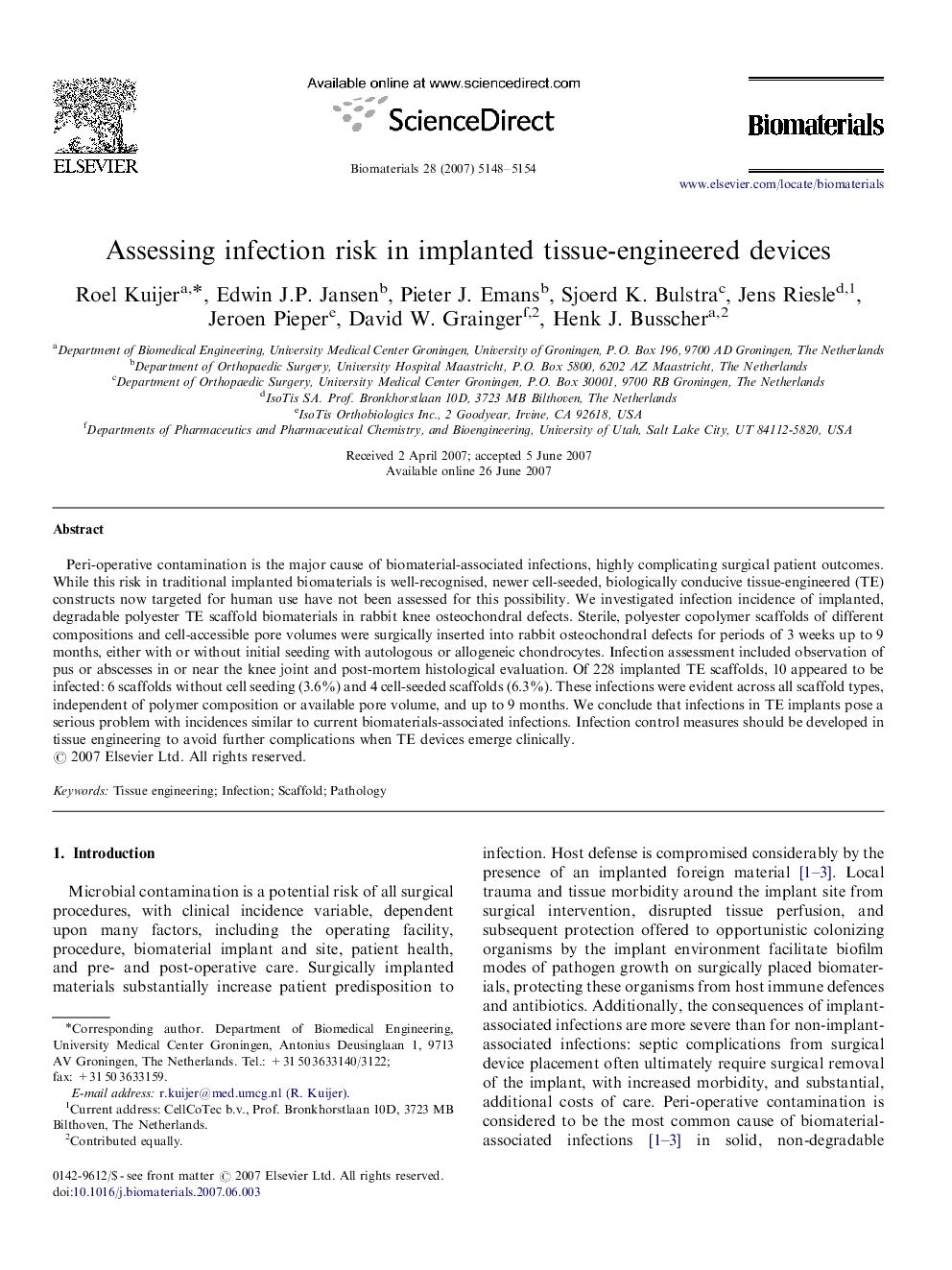| کد مقاله | کد نشریه | سال انتشار | مقاله انگلیسی | نسخه تمام متن |
|---|---|---|---|---|
| 10257 | 675 | 2007 | 7 صفحه PDF | دانلود رایگان |

Peri-operative contamination is the major cause of biomaterial-associated infections, highly complicating surgical patient outcomes. While this risk in traditional implanted biomaterials is well-recognised, newer cell-seeded, biologically conducive tissue-engineered (TE) constructs now targeted for human use have not been assessed for this possibility. We investigated infection incidence of implanted, degradable polyester TE scaffold biomaterials in rabbit knee osteochondral defects. Sterile, polyester copolymer scaffolds of different compositions and cell-accessible pore volumes were surgically inserted into rabbit osteochondral defects for periods of 3 weeks up to 9 months, either with or without initial seeding with autologous or allogeneic chondrocytes. Infection assessment included observation of pus or abscesses in or near the knee joint and post-mortem histological evaluation. Of 228 implanted TE scaffolds, 10 appeared to be infected: 6 scaffolds without cell seeding (3.6%) and 4 cell-seeded scaffolds (6.3%). These infections were evident across all scaffold types, independent of polymer composition or available pore volume, and up to 9 months. We conclude that infections in TE implants pose a serious problem with incidences similar to current biomaterials-associated infections. Infection control measures should be developed in tissue engineering to avoid further complications when TE devices emerge clinically.
Journal: Biomaterials - Volume 28, Issue 34, December 2007, Pages 5148–5154